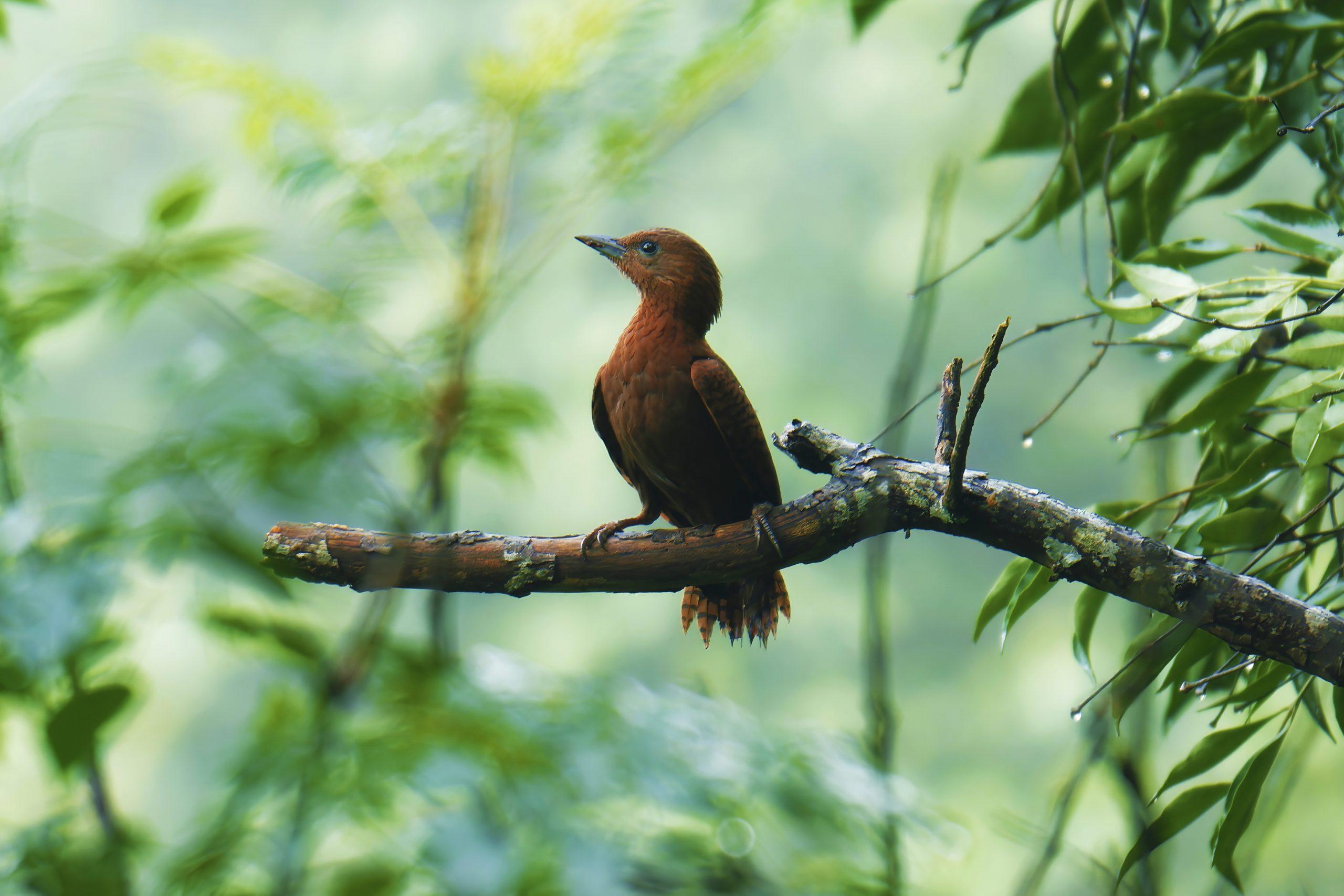The rufous woodpecker (Micropternusbrachyurus) is a medium-sized woodpecker characterized by its unusual brownish coloration and short, dark bill. The overall coloration and wing markings exhibit considerable variation across its wide range. A red patch beneath the eye distinguishes males. The rufous woodpecker produces a variety of loud, persistent calls, including a sharp “weep weepweep!” and a distinctive drum pattern that accelerates and then fades. It is known for its foraging activities at various levels of the forest, often in association with mixed-species flocks. This woodpecker frequently drills into ant nests.
A short-billed species, the rufous woodpecker forages in pairs, primarily feeding on small insects, such as ants and termites, within scrub, evergreen, and deciduous forests. It is noted for its unique nesting behavior, constructing its nest within the carton nests of arboreal ants in the genus Crematogaster. Although previously classified within the Neotropical genus Celeus, recent molecular phylogenetic studies have supported its placement in the monotypic genus Micropternus.
The rufous woodpecker measures approximately 25 centimeters in length and is characterized by its overall dark brown coloration with dark bands on the wing and tail feathers, resulting in a black-barred appearance. The head appears paler, and the underparts are of a darker shade. The bill is short, black, and slightly curved at the culmen, with a narrow base at the nostrils. The tail is short and rufous with narrow black bars, although in the subspecies badiosus, the tail is dark with narrow rufous bars. Feather margins are pale in squamigularis and annamensis. The neck, ear, and lore feathers are unmarked. Males exhibit red-tipped feathers beneath the eyes, between the eye and ear coverts, and on the malar region, sometimes forming a distinct patch. Females and young lack these red feather tips. A weak but erectile crest is present. Juveniles may appear streaked on the throat, although this feature is also observed in some subspecies.
In the field, rufous woodpeckers may appear soiled and have a distinctive odor due to their foraging and nesting activities within Crematogaster ant nests, which are known for their unique defense mechanism involving the spraying of a fluid at intruders.
This Bird was photographed at Mahananda, West Bengal, India
Special thanks to the CIS-A2K and Wiki Loves Birds & Wikipedia Team.
These rare photographs have been clicked and contributed by
K. Shiva Kumar, a professional Wildlife Storyteller
(M.A in Journalism & Mass Communication,
an alumnus of Central University Of Odisha, Koraput)
from Hyderabad, Telangana.
K. Shiva is passionate about wildlife conservation. Through his work, he hopes to inspire greater appreciation for the wildlife that shares our planet and encourages conservation action.








